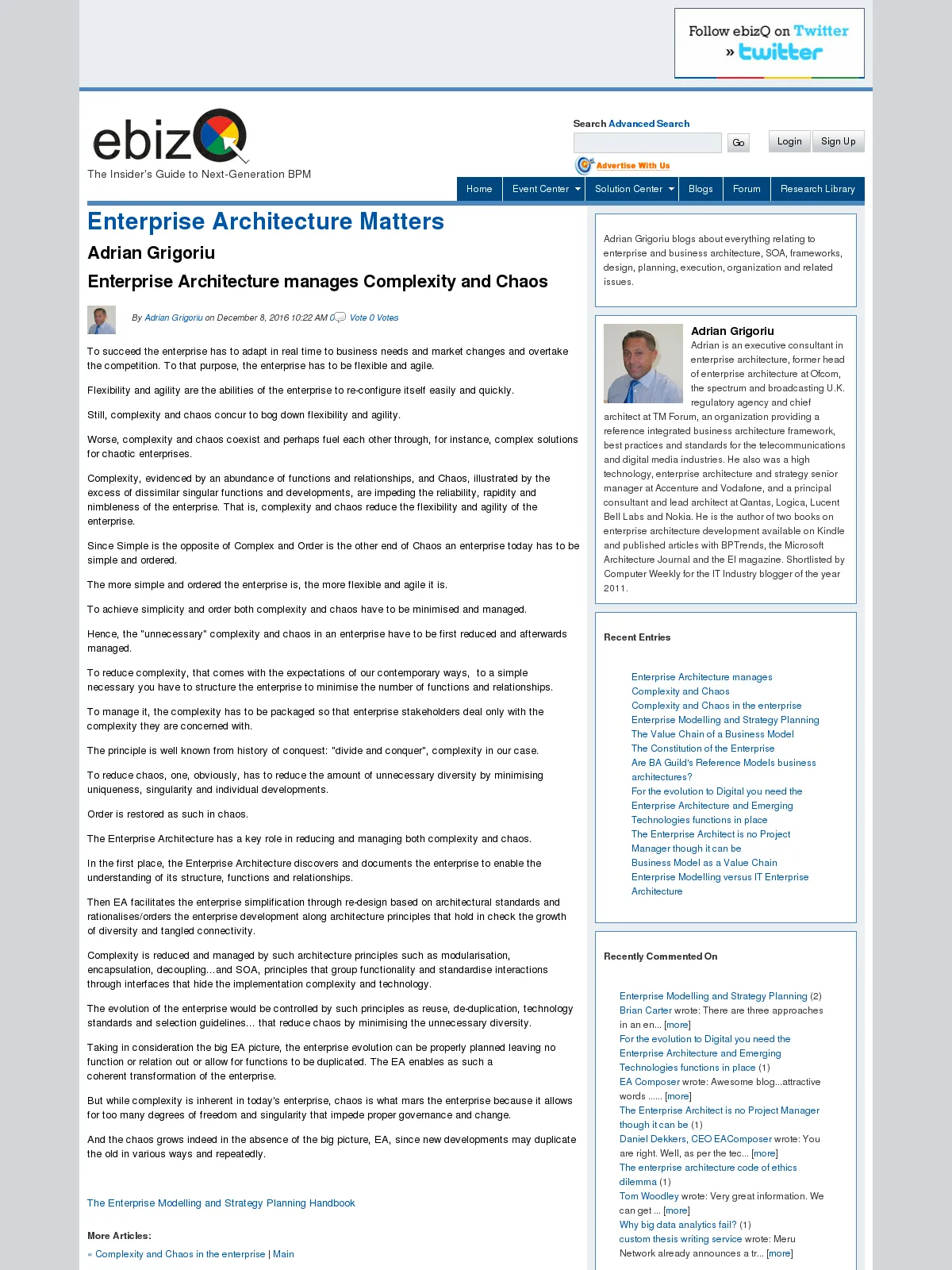Enterprise Architecture manages Complexity and Chaos
To succeed the enterprise has to adapt in real time to business needs and market changes and overtake the competition. To that purpose, the enterprise has to be flexible and agile.
Flexibility and agility are the abilities of the enterprise to re-configure itself easily and quickly.
Still, complexity and chaos concur to bog down flexibility and agility.
Worse, complexity and chaos coexist and perhaps fuel each other through, for instance, complex solutions for chaotic enterprises.
Complexity, evidenced by an abundance of functions and relationships, and Chaos, illustrated by the excess of dissimilar singular functions and developments, are impeding the reliability, rapidity and nimbleness of the enterprise. That is, complexity and chaos reduce the flexibility and agility of the enterprise.
Since Simple is the opposite of Complex and Order is the other end of Chaos an enterprise today has to be simple and ordered.
The more simple and ordered the enterprise is, the more flexible and agile it is.
To achieve simplicity and order both complexity and chaos have to be minimised and managed.
Hence, the "unnecessary" complexity and chaos in an enterprise have to be first reduced and afterwards managed.
To reduce complexity, that comes with the expectations of our contemporary ways, to a simple necessary you have to structure the enterprise to minimise the number of functions and relationships.
To manage it, the complexity has to be packaged so that enterprise stakeholders deal only with the complexity they are concerned with.
The principle is well known from history of conquest: "divide and conquer", complexity in our case.
To reduce chaos, one, obviously, has to reduce the amount of unnecessary diversity by minimising uniqueness, singularity and individual developments.
Order is restored as such in chaos.
The Enterprise Architecture has a key role in reducing and managing both complexity and chaos.
In the first place, the Enterprise Architecture discovers and documents the enterprise to enable the understanding of its structure, functions and relationships.
Then EA facilitates the enterprise simplification through re-design based on architectural standards and rationalises/orders the enterprise development along architecture principles that hold in check the growth of diversity and tangled connectivity.
Complexity is reduced and managed by such architecture principles such as modularisation, encapsulation, decoupling...and SOA, principles that group functionality and standardise interactions through interfaces that hide the implementation complexity and technology.
The evolution of the enterprise would be controlled by such principles as reuse, de-duplication, technology standards and selection guidelines... that reduce chaos by minimising the unnecessary diversity.
Taking in consideration the big EA picture, the enterprise evolution can be properly planned leaving no function or relation out or allow for functions to be duplicated. The EA enables as such a coherent transformation of the enterprise.
But while complexity is inherent in today's enterprise, chaos is what mars the enterprise because it allows for too many degrees of freedom and singularity that impede proper governance and change.
And the chaos grows indeed in the absence of the big picture, EA, since new developments may duplicate the old in various ways and repeatedly.
The Enterprise Modelling and Strategy Planning Handbook
